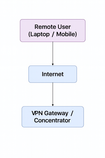OSPF Routing Protocol: Design Principles for Scalable Enterprise Networks
- The Itvue Team
- Aug 20
- 2 min read
Author Ermias Teffera
At ITvue Networks, designing scalable, resilient, and efficient networks is critical. One of the most powerful routing protocols used in enterprise networks is OSPF (Open Shortest Path First). In this blog, we’ll explore OSPF design principles, hierarchical structure, area planning, best practices, and real-world examples with Cisco configurations and diagrams.
What is OSPF?
OSPF is a link-state routing protocol that dynamically routes traffic within an autonomous system (AS). Key characteristics:
Fast convergence and loop-free topology
Supports hierarchical area design for scalability
Uses cost metrics based on interface bandwidth
Supports VLSM (Variable Length Subnet Mask)
OSPF Hierarchical Design
Large networks require hierarchy to minimize routing table size and reduce LSA flooding. Cisco recommends three main layers:
Backbone Area (Area 0)
Core of the OSPF network
All areas must connect to Area 0 directly or via virtual links
Regular Areas (Non-Backbone Areas)
Connects access and distribution layers to the backbone
Can be standard, stub, or totally stubby areas to reduce routing overhead
Edge Areas / NSSAs
For connecting external networks like Internet or partner networks
NSSA allows limited external route injection
OSPF Design Principles
1. Hierarchical Area Planning
Use Area 0 as backbone; all other areas must connect to it.
Avoid large flat OSPF areas; ideally <50 routers per area.
Reduce LSA flooding by summarizing routes at area borders.
Diagram: OSPF Hierarchical Areas

2. Router Types
Internal Router: All interfaces in one area
Backbone Router: Located in Area 0
Area Border Router (ABR): Connects a non-backbone area to Area 0
Autonomous System Boundary Router (ASBR): Injects external routes (e.g., BGP, EIGRP) into OSPF
3. Cost Calculation & Load Balancing
OSPF cost = 100,000,000 / Interface Bandwidth (bps) by default on Cisco
Example: 1Gbps interface → cost = 100
Supports equal-cost multi-path (ECMP) for load balancing across multiple paths
4. Types of Areas

5. Summarization & Route Aggregation
Summarize networks at ABRs to reduce the number of routes propagated to backbone.
Example: 192.168.10.0/24 and 192.168.11.0/24 → summarize as 192.168.8.0/21
Cisco OSPF Configuration Example

OSPF Best Practices
Design Hierarchically: Minimize flat areas and optimize LSA propagation.
Use Router IDs Carefully: Assign unique router IDs for troubleshooting.
Configure Passive Interfaces: Reduce unnecessary OSPF hello packets.
Summarize Routes: Minimize routing table size on ABRs.
Avoid Unequal Cost Paths: Manually tune interface cost if necessary.
Monitor with show ip ospf neighbor and show ip route ospf
Real-World Example
In a multi-campus enterprise:
Each building is an OSPF area (Area 1, Area 2, etc.)
Distribution routers are ABRs connecting to the Area 0 backbone
Edge routers are ASBRs injecting Internet routes from BGP
EtherChannel is used for high-speed aggregation between distribution and core to ensure bandwidth and redundancy
This setup allows fast convergence, scalable routing, and minimal downtime in case of link failures.
Conclusion
OSPF is a highly scalable and efficient routing protocol when designed with proper hierarchy, summarization, and redundancy in mind. By implementing Area 0 backbone, ABRs, ASBRs, ECMP, and EtherChannel, ITVue Networks ensures our clients have robust, resilient, and high-performance routing across their enterprise networks.










Comments